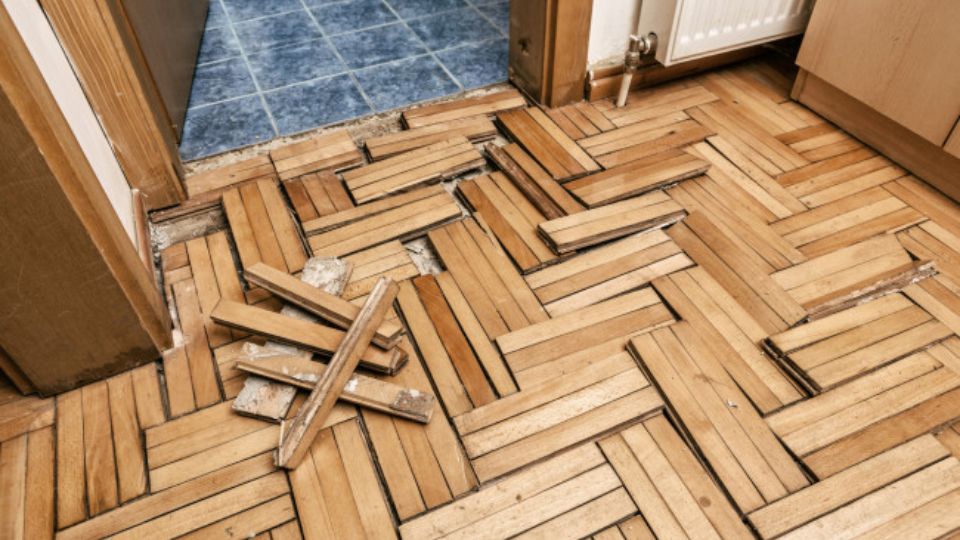Living in an apartment can come with its own set of challenges. For instance, having noisy neighbors can create a negative home environment, while a malfunctioning elevator in the building can make it difficult to reach your apartment. However, dealing with mold is something no renter wants to face. This article will discuss mold in apartments and the appropriate timeline for landlords to address mold issues.
NYC Apartments Mold Issue
You might have noticed mold developing on a slice of bread, appearing as a distinct bright or dark green fuzzy patch. Structural mold has a distinct appearance – it is typically black, rather than green, making it easy to identify. If you notice clusters of black dots under your sink, along your ceilings, or on your walls, you probably have mold in your apartment.
Keep in mind that mold may not always be detectable. If you notice a sudden funky smell or experience new health issues like chronic nasal congestion or breathing problems, it’s important to take note.
Factors that Lead to Mold Growth in Apartments
Mold typically forms due to high levels of moisture in your apartment. This issue could be caused by a leak in your apartment that has gone unnoticed or not been fixed, such as a broken pipe in the wall or a faulty roof. If not addressed, a mold problem may develop in your apartment.
Poor ventilation can result in too much moisture accumulating from activities such as showering. An outdated or inefficient HVAC system can lead to mold growth, particularly if condensation from the system adds to the moisture problem. Keep in mind that mold spores can spread from one area to another through the ventilation system and could pose health risks. It’s possible to get sick even if the mold issue didn’t start in your home.
What makes Mold in an Apartment Harmful?
Mold can cause illness, and individuals with weakened immune systems are at higher risk of experiencing more severe symptoms from exposure to mold. It’s concerning that you could get sick because mold spores are airborne and can spread due to someone’s carelessness. Mold can lead to symptoms like colds, burning eyes, breathing issues, wheezing, and a congested nose.
Having a pre-existing condition such as lung disease or asthma could make the effect dangerous. It’s important to monitor and control the humidity levels in your apartment and be vigilant for any signs of mold. Addressing mold growth promptly is key to preventing further issues.
Also Read: Satellite images show devastation of Texas wildfires
What is the timeframe for a landlord to address a mold issue?
Upon discovering mold in your apartment, it is important to promptly inform your landlord. Consider using certified mail or another trackable method to have proof of notification if necessary. Also, make sure to stay in touch with the landlord through phone calls, text messages, or face-to-face conversations to speed up the repair process.
The time it takes for a landlord to address your mold issue may vary depending on the specific situation. Most courts consider seven days a reasonable timeframe to start addressing mold problems.
Mold in Your Apartment in NYC
Currently, it is understood that mold poses health risks and is unattractive. This can be detrimental for children, adults, or individuals with specific health conditions such as asthma. If you discover mold in your apartment, your landlord must address the problem promptly according to the law. Here’s what to do when you find mold in your NYC apartment:
Inform your Landlord
Your landlord must ensure that your apartment remains mold-free. NYCHA believes that tenants have the right to live in an apartment free of mold.
Once you spot mold, the next step is to inform your landlord. It is important to send a formal complaint letter and/or use another traceable method (such as a text message or email) to notify the landlord. Keep a copy of the document for future reference in case the landlord does not address the issue promptly.
Record the Issue
Next, capture the mold by photographing it. Additionally, make sure to record the dates and times of your communication with the landlord regarding the problem. Keeping a log of all your attempts to address the issue will be beneficial in case you need to make an insurance claim or consider legal action for compensation.
Remove Small Patches of Mold
As you wait for the landlord to take action on the mold in your apartment, it’s important to clean any visible mold using a mixture of bleach and water. If you have a mold allergy, it’s best to have someone else handle it for you. Get rid of anything that had mold growing on it, like curtains or rugs. Make sure to save the receipts for any items you bought to replace your damaged belongings. You could potentially claim them as a loss on your insurance or receive reimbursement from your landlord.



Leave a Reply